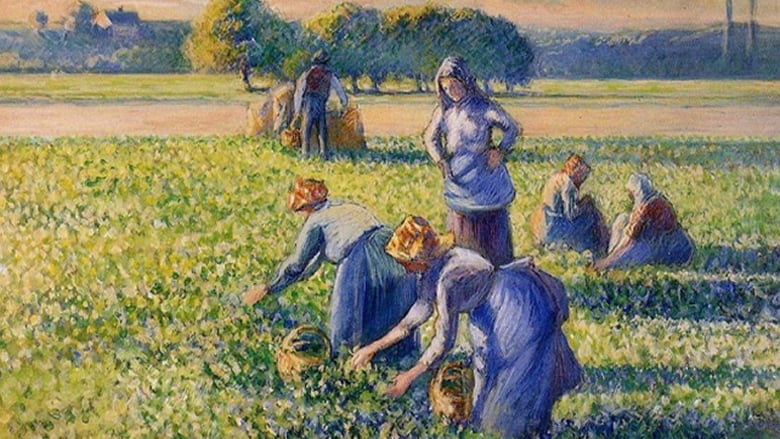Lebanon is governed by a “traditional” set of rules. It is undeniable that these set of rules were implemented at a time in which it was by a sectarian, male-dominated system, even if this is not how tradition nor rules came to be originally. When we look at it at a larger scale with respect to the economy, Lebanese society is much like an iceberg, only one third visible above the surface, which represents the capitalist economy and patriarchal foundation. The invisible part, however, is supported by the minority groups suffering at the hands of the visible part of the iceberg, which in our case, is women and the environment.
Famous German philosopher Friedrich Engels claimed that a sexual division of nature already existed. Back in more primal times, men were the hunters and women the child bearers. The lineage was naturally defined by the mother — her line determined family identity, which made sense (you could always know who the mother is, but not the father, at least not without reliable testing methods). And according to Engels, the domination of one sex over the other did not exist. Times have changed rather drastically. So the real question is, what really happened?
Engels speculated that the idea of private property was the initial trigger that introduced the world we live in today: the patriarchy. The entire philosophy of men and women as codependent elements of the two most primal instincts (survival and reproduction) changed. At a later stage, animals were domesticated. Men gradually became more concerned with property and passing it on to their sons. This was the beginning. The patriarchy spewed and planted its seeds, “a system of inheritance that would travel through the father line, insuring that they and their male descendants would maintain ownership of the herd”. Eventually, men inhibited their wives’s social and sexual lives, and through this, they were capable of ensuring that the lineage was their own. At this point, women became “a mere instrument for the production of children”.
In Engels’ words, this was “the world historical defeat of the female sex”.
However, if one were to look just a little bit deeper, one will uncover the bridge between women and another equally exploited aspect of our world: land. Land is as much a victim of exploitation as women. In fact, the patriarchy’s partner in crime is no other than capitalism, an economic system defined by private ownership of a means of production for profit. And this is what fuelled the misuse of resources without regard for the longterm effects on the environment.
Now this is where Karl Marx comes into play. Marxism defines the deterioration of the environment as the following: “As individual capitalists are engaged in production and exchange for the sake of immediate profit”.
So, is the pattern clear now?
The patriarchy oppresses women. The capitalist system exploits the environment. The belief that women have a limited role of motherhood, property of her husband, is paralleled with the opinion that the environment is a resource of production, property of whoever owns that resource.
Françoise D’Eaubonne was the first to propose ecofeminism in the early 1970s. But thinking of it as ecology and feminism under the same umbrella is far too simple. Ecofeminism is a branch of feminism and it studies not only the link between women and the environment, but also their considerably lower status relative to the self-proclaimed dominant groups. It follows the belief that both the environment and non-male genders have a lower status than men and therefore, face discrimination. Marx firmly believed that the true imposter behind these acts of discrimination is the inability to realise the link between humans and nature. We are neither superior to nor separated from it. “The marginalisation of women and the destruction of biodiversity go hand in hand,” said Vandana Shiva, an Indian ecofeminist.
Among the first footsteps left behind by ecofeminists of the world was in Mandal, Uttarakhand. It was the Chipko movement that was launched to oppose the government’s contract that granted a sporting goods company right to cut down trees for the purpose of producing tennis rackets. What made this protest so special was the famous tree-hugging action. The result of this movement was a 15-year ban on curing down trees in the Himalayan forests by the central government. A 15-year ban.
Imagine embracing this approach in Lebanon, mother of the 12th most polluted city in the world and a country with among the largest gender gaps relative to its neighbors. With a society of capitalist economy and patriarchal foundation, the implementation of the ecofeminist approach to dismember the hierarchy and place all members of the community and the environment on one equal level. It is evident that an ecofeminist approach could succeed in emphasising the harmful effects of a hierarchal society on oppressed communities and the environment, as well as help in pinpointing the unequal ways in which climate change distresses different groups. It would work on getting all stakeholders, like governments and companies, to obligate the preservation of the environment. With this approach, the environment would become the most important stakeholder, no longer a mere topic for discussion. That bridge between nature and humans would be the beautiful beginning of all agenda designed to restore the earth. And this is applicable to all countries that adopt similar societal systems.
It creates a vision of a society that dismembers the capitalist and patriarchal foundation and reorders the building blocks in such a way that the society is in harmony with nature. It will abolish socially and economically destructive systems, and adopting this ecofeminist approach catalyses the transformation into an eco-socialist society that rids itself of what stains our world today.





